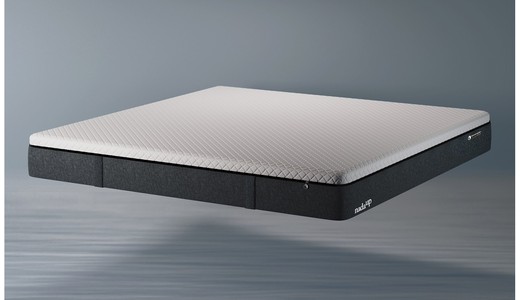Trapped Inside: How Emotions Shape Our Health—and How NadaUp Sets You Free

Emotions are more than fleeting feelings; they are intricate biochemical and physiological responses to our perceptions of the world. As Dr. Bradley Nelson eloquently states in The Emotion Code, emotions are “energy in motion.” When these emotional energies are not fully processed, they can become lodged in our bodies, manifesting as pain, illness, or mental fog. Nelson writes, “Trapped emotions are literally balls of energy, vibrating at different frequencies depending on the emotion” (Nelson, 2007).
Other psychological works echo this concept. In The Body Keeps the Score, psychiatrist Dr. Bessel van der Kolk explores how unprocessed trauma—often stored emotionally—can lodge itself physically within the body, altering posture, hormones, and even the capacity for deep sleep and joy (Van der Kolk, 2014). According to neuroscientific research, emotions can imprint on the amygdala, the brain’s emotional processing center, and alter the autonomic nervous system's response to future stressors (LeDoux, 2000).
Trapped Emotions: When Energy Gets Stuck
Trapped emotions occur when a person is unable to process an emotion completely—due to shock, suppression, cultural conditioning, or trauma. These trapped emotions can create energetic blockages that disrupt the body's natural flow. Dr. Nelson found in his clinical experience that people suffering from persistent fatigue, chronic pain, depression, and anxiety often had trapped emotional energy residing somewhere in their physical body.
Modern psychosomatic medicine supports this. One study published in Psychology & Health linked emotional suppression to increased cortisol levels, systemic inflammation, and lowered immune function (Pennebaker et al., 1997). The cost of bottling emotions isn’t just mental—it’s molecular. It affects hormone regulation, cellular repair, and sleep cycles.
The Healing Power of Sleep
Sleep is the body’s most powerful tool for emotional regulation and recovery. During deep sleep, the brain flushes emotional waste through the glymphatic system—a night-time cleansing mechanism discovered by neuroscientists in 2012 (Xie et al., 2013). Moreover, sleep is when the brain consolidates emotional memories, processing them in the hippocampus and reducing emotional reactivity the next day (Walker & van der Helm, 2009).
Lack of quality sleep doesn’t just leave you tired. It reduces your threshold for emotional control. Studies show that individuals with insufficient sleep display heightened amygdala activity—a sign of increased emotional volatility (Yoo et al., 2007). This makes it more difficult to process new emotions and even harder to clear the old ones.
NadaUp: A Mattress Designed to Heal What You Don’t See
Healing trapped emotions starts with creating an environment where the nervous system can shift from “fight or flight” to “rest and digest.” That’s where NadaUp comes in. At its core, NadaUp is not just a mattress—it’s a medical-grade healing platform. Designed in collaboration with Mammoth and tested by Oxford and Northumbria Universities, NadaUp mattresses help reestablish physiological balance from the ground up (EN NadaUp - Every night)
Here’s how NadaUp contributes to emotional healing:
1. Reducing Physical Tension
NadaUp mattresses are filled with Mammoth Medical Grade™ foam that molds to the body, releasing musculoskeletal tension. This helps deactivate stress response pathways in the brain and activate the parasympathetic nervous system—essential for emotional processing and recovery (EN NadaUp - Every night)
2. Lowering Cortisol Levels
Stress-related hormone cortisol is linked with anxiety, irritability, and poor sleep. NadaUp’s foam has been scientifically shown to reduce cortisol levels through enhanced comfort and thermoregulation, leading to a more balanced hormonal profile (EN NadaUp - Every night)
3. Supporting Nervous System Repair
A well-supported spine and relaxed musculature enable the vagus nerve—a major player in the emotional nervous system—to function optimally. This promotes higher heart rate variability (HRV), a sign of emotional resilience. NadaUp enhances deep sleep by supporting spinal alignment and temperature regulation (EN NadaUp - Every night)
4. Encouraging Better Sleep Quality
NadaUp has been clinically tested to improve sleep efficiency by 7%, reduce time to fall asleep by 29%, and increase perceived sleep satisfaction by 21% (EN NadaUp - Every night) These are not just numbers—they represent emotional detox hours regained each night.
5. Restoring Flow and Emotional Balance
Users have reported better moods, reduced anxiety, and greater energy. This is not surprising, given NadaUp’s proven ability to promote melatonin production, reduce cortisol, and balance serotonin levels—hormones that form the triangle of emotional well-being (EN NadaUp - Every night)
From Stuck to Soaring: Emotional Freedom Begins in Bed
Healing trapped emotions doesn’t happen in a therapist’s office alone—it happens every night when you lie down to rest. Emotional transformation is possible when you give your body a break from the tension, heat, and pain that perpetuate emotional stress.
NadaUp helps you do just that.
As Dr. Nelson writes, “When you release trapped emotions, you literally free yourself from the emotional baggage that can hold you back in life.” The NadaUp mattress is your quiet partner in this freedom. It gently invites your body to relax, your mind to settle, and your emotions to find resolution.
So tonight, as you slip into your NadaUp mattress, remember: you’re not just lying down. You’re letting go.
References
-
Nelson, B. (2007). The Emotion Code: How to Release Your Trapped Emotions for Abundant Health, Love and Happiness. Wellness Unmasked Publishing.
-
Van der Kolk, B. A. (2014). The Body Keeps the Score: Brain, Mind, and Body in the Healing of Trauma. Viking.
-
LeDoux, J. E. (2000). Emotion circuits in the brain. Annual Review of Neuroscience, 23(1), 155–184.
-
Pennebaker, J. W., Kiecolt-Glaser, J. K., & Glaser, R. (1997). Disclosure of traumas and immune function: Health implications for psychotherapy. Journal of Consulting and Clinical Psychology, 65(2), 239–245.
-
Xie, L., Kang, H., Xu, Q., et al. (2013). Sleep drives metabolite clearance from the adult brain. Science, 342(6156), 373–377.
-
Walker, M. P., & van der Helm, E. (2009). Overnight therapy? The role of sleep in emotional brain processing. Psychological Bulletin, 135(5), 731–748.
-
Yoo, S. S., Gujar, N., Hu, P., Jolesz, F. A., & Walker, M. P. (2007). The human emotional brain without sleep—a prefrontal amygdala disconnect. Current Biology, 17(20), R877–R878.
-
NadaUp Sleep Research Report. Mammoth Medical Grade™ Foam. Northumbria University and University of Oxford Clinical Tests (EN NadaUp - Every night)









